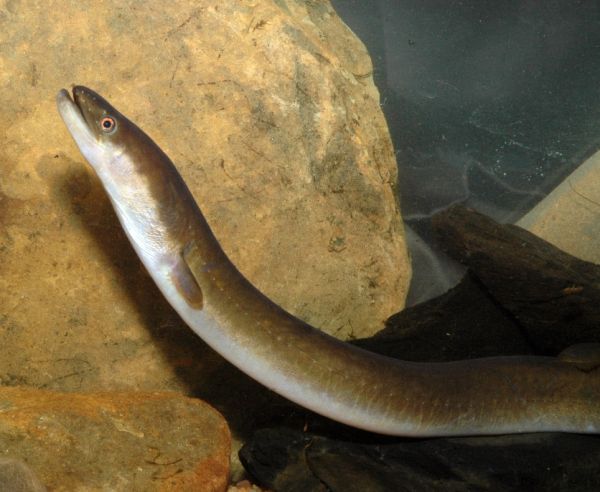
Pictures courtesy Arthur Rylah Institute
With their long thin olive-green bodies, the short-finned eels aren’t much to look at, but these native Australian fish love to travel.
The epic migration of the short-finned eel is supported by environmental flows which help them move from rivers, lakes and swamps out to the Coral Sea.
The adult eels move from freshwater streams out to the ocean to breed, and although the exact spawning site of the eel is unknown, we do know that they can travel up to 5,000 kilometres to reach the site – a journey that can take over a year!
Before they begin their long swim the eels have a huge feast fattening themselves up for the trip, then once they reach the ocean they fight the currents and migrate north to reproduce. It is thought that they spawn between New Caledonia and New Guinea in very deep water. They only make the epic trip once in their lifetime and die shortly after breeding.
![]()
Ocean currents then carry the larvae back to Australia and down the east coast. If these currents are strong, there is often a larger number of eels that make it to the rivers.
The larvae move down the east coast of Australia and grow into juvenile eels before entering Australian freshwater rivers and streams. The eels can detect the freshwater, assisting their navigation towards inland water. When river flows are low this ability is reduced, often resulting in lower eel numbers. Once in the rivers, the juvenile eels can make their way up stream – they are even able to climb around waterfalls or small dam walls that might be obstructing their path. Male short-finned eels generally mature around 8-12 years , and females 10-20 years, before migrating out to sea to spawn. As a general rule females generally occur further upstream than males.
Water for the environment helps maintain the short-finned eel’s habitat and fuel its diet. The eels prefer slow-flowing habitats including around undercut banks and snags and are found in Victoria, south of the Great Dividing. The eels tend to feed at night in the shallow edges of the water and often fossick for fish, worms, insects, small crustaceans and molluscs.
In an exciting investigation to gain further insight into the eel’s migratory habits, DELWP’s Arthur Rylah Institute, Gunditjmara Traditional Owners and the Glenelg Hopkins Catchment Management Authority are collaborating on a three year project using innovative satellite tagging technology to gain information about the eel’s life cycle and help support their continued survival.
Check out Arthur Rylah Institute to find out more.
How do environmental flows help short-finned eels?
- Strong river flows give eels the trigger they need to migrate downstream to the ocean, but if these flows can’t be achieved naturally the eels won’t receive this cue. Managers use freshes (short-duration environmental flows a few days in length) to mimic these natural high flows and trigger the eels’ downstream migration.
- Similarly, freshes can provide the trigger that juvenile eels need to migrate upstream from estuaries into rivers and streams.
- Environmental flows also help maintain valuable habitat for native species, water bugs and aquatic plants in our rivers, by mobilising sand and sediments, and by scouring holes in the riverbed. Productive habitat for water bugs and aquatic plants supports eels by providing a variety of food sources.